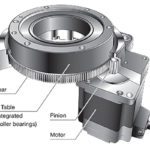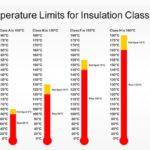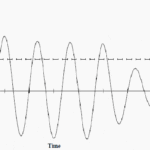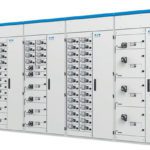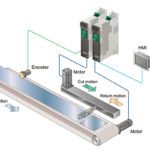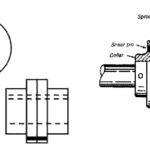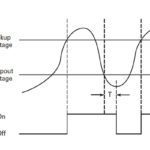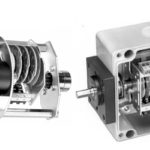When we think about actuators, we typically think about linear actuators — devices that move loads in a straight line, driven by a screw, belt, or other mechanical power transmission device. But there also exists a class of actuators that provide rotary motion for positioning a load radially around a fixed axis. While these rotary […]
What does motor insulation class specify and why is it important?
Any time current flows through a wire — such as the windings in a motor — resistance in the wire, as well as other losses, cause heat to be generated. This heat will eventually transfer to other parts of the motor, causing them to degrade over time. One of the key components affected by this […]
What is inrush current in an AC motor and why does it matter?
When an electrical device, such as an AC induction motor, is switched on, it experiences a very high, momentary surge of current, referred to as inrush current. When an AC induction motor is started, the supplied voltage creates a magnetic field in the stator, which induces a magnetic field in the rotor. The interaction of […]
What is a motor control center (MCC)?
Manufacturing plants often contain dozen, if not hundreds, of motors — driving everything from packaging and processing equipment to fans and pumps. Motor control centers allow facilities such as these to centralize control of some or all of their motors into one location. The basic structure of a motor control center (MCC) is a metal cabinet […]
What is a flying shear application in motion control?
The term “motion control” spans a wide range of applications that involve controlling the movement of a linear or rotary axis to achieve a goal such as moving to a specified position or precisely following a defined path. And although there are numerous variations, at their core, many of these applications can be grouped into […]
How do shear pin torque limiters work and when are they used?
Shear pin torque limiters are a simple, cost-effective design for protecting equipment from torque overloads. In their most basic form, they incorporate a pin (or, for very high torque ratings, multiple pins) inserted between two rotating elements, such as discs or flanges. When torque is being transmitted from the driving to the driven load, the […]
How do ball detent torque limiters work and when are they used?
Rotating equipment such as motors, gearboxes, and fans can experience a torque overload if the system encounters an unexpected malfunction such as a jam or crash of the driven load. One way to protect these expensive components — and to avoid physical injury to personnel — is to install a torque limiter in the drive […]
What are voltage monitoring relays and how are they used?
Relays are used in motor-driven applications to measure and monitor operating parameters such as temperature, current, or voltage, preventing damage to the motor and connected equipment in the case of a fault or abnormal operating condition. Voltage monitoring relays can detect not only under-voltages and over-voltages, but also voltage-related issues such as phase imbalances, phase […]
What is a zero pressure accumulation conveyor?
A common function of a conveyer system is to accumulate products — in other words, to stop them from moving along the conveyor to create a buffer, establish a queue, or smooth out differences in material movement between upstream and downstream operations. But traditional accumulation methods allow products to bump into each other and stack up […]
What are geared cam limit switches?
Electromechanical switches are often placed at the ends of linear axes to indicate the limits of travel. But for applications with rotary — rather than linear — motion, geared cam limit switches can perform a similar function by tracking rotations of the motor shaft and triggering switches to stop movement when the specified number of […]
